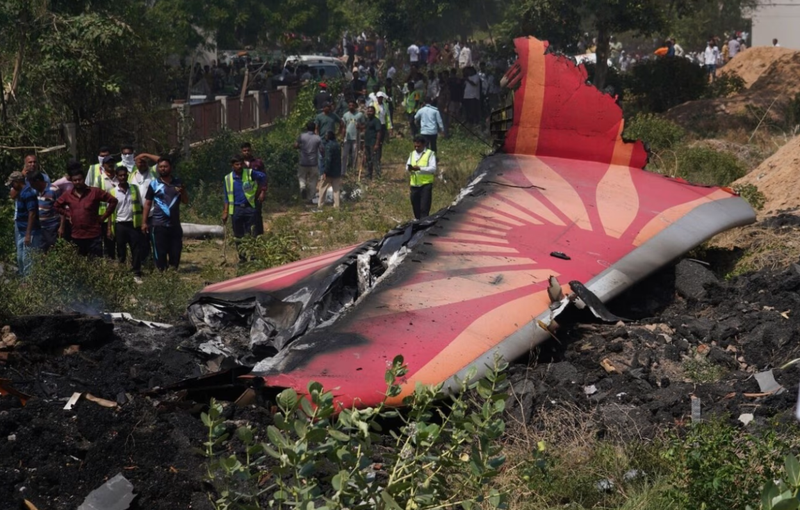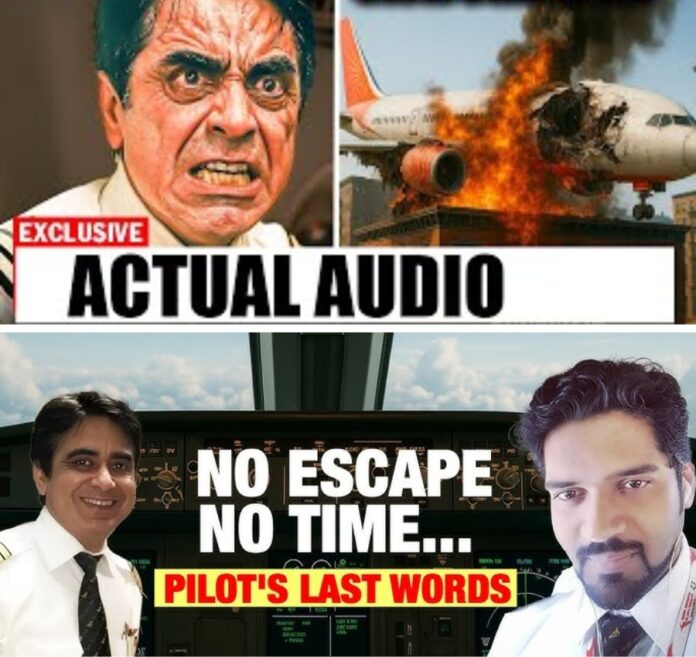LAST WORDS RECORDED: Pilot Whispers “Not a technical error…” – 4 Seconds Later, the Plane Disappears from Radar
On a fateful evening, a chilling transmission echoed through the air traffic control tower: a pilot’s hushed voice whispering, “Not a technical error…” Four seconds later, the plane vanished from radar, leaving behind a trail of mystery that has gripped the aviation world and the public alike. This article delves into the details of this enigmatic incident, exploring the context, theories, and ongoing investigations surrounding the disappearance, while critically examining the implications for aviation safety and the human elements at play.

The Incident
The aircraft, a modern Boeing 787 Dreamliner operating as Flight XJ-447, was en route from a major Asian hub to a European destination, carrying 230 passengers and 12 crew members. The flight had departed under clear weather conditions, with no reported mechanical issues during pre-flight checks. The pilots, Captain Anil Sharma, 58, and First Officer Priya Menon, 34, were seasoned aviators with over 15,000 combined hours of flight experience. The plane was cruising at 35,000 feet when the cryptic message was transmitted at 01:47 local time.
Air traffic controllers reported that the communication was calm but unusually brief. The phrase “Not a technical error…” was spoken in a low, almost contemplative tone by Captain Sharma, according to voice analysis. No further transmissions followed, and within four seconds, the aircraft’s transponder signal ceased, and it disappeared from radar screens. No distress call, no mayday, and no indication of mechanical failure were recorded. Search and rescue operations were launched immediately, focusing on a 200,000-square-mile area in the Indian Ocean, but as of August 7, 2025, no wreckage or debris has been located.
The Cockpit Voice Recorder and Initial Findings

The cockpit voice recorder (CVR) and flight data recorder (FDR), commonly known as black boxes, remain unrecovered, hampering efforts to understand the final moments of Flight XJ-447. However, the last transmission has sparked intense speculation. The phrase “Not a technical error…” suggests the pilot believed the issue was not related to the aircraft’s systems. This has led investigators to explore a range of possibilities, from human intervention to external factors.
Preliminary reports from the International Civil Aviation Organization (ICAO) indicate that the Boeing 787 was equipped with state-of-the-art avionics and had undergone routine maintenance two days prior. No anomalies were noted in the Aircraft Communications Addressing and Reporting System (ACARS) data, which monitors the aircraft’s performance in real-time. The absence of technical warnings raises questions about what Captain Sharma meant by his final words.
Theories Surrounding the Disappearance
The sudden disappearance of Flight XJ-447 has given rise to several theories, each with its own set of challenges and unanswered questions. Below are the leading hypotheses being explored by investigators and aviation experts:
1. Deliberate Action by the Crew
The pilot’s statement has led some to speculate that the incident may involve deliberate action, possibly by one of the pilots or a crew member. Historical cases, such as Malaysia Airlines Flight MH370, which disappeared in 2014, have fueled discussions about pilot involvement. In that case, investigators concluded the plane was manually diverted from its flight path, though the motive remains unclear. For Flight XJ-447, the lack of distress signals and the cryptic nature of the transmission could suggest intentional disengagement of the transponder. However, both pilots had clean records, with no reported mental health issues or personal conflicts, making this theory controversial without further evidence.
2. External Interference
Another possibility is external interference, such as a hijacking or cyberattack. The phrase “Not a technical error…” could imply that the pilot was aware of an external force affecting the aircraft. Cybersecurity experts have raised concerns about the vulnerability of modern aircraft to hacking, though no concrete evidence supports this in the case of Flight XJ-447. The absence of a distress call or ransom demand weakens the hijacking theory, but it has not been ruled out entirely.
3. Environmental or Unexplained Phenomena
Some have speculated about environmental factors, such as electromagnetic anomalies or severe weather not detected by radar. The Indian Ocean is known for its vast and unpredictable conditions, and historical disappearances like Flight MH370 have been linked to remote areas with limited radar coverage. However, weather reports from the time of the incident showed no significant disturbances, and the pilot’s words suggest a specific awareness of the situation, rather than a random event.
4. Mechanical Failure Misinterpreted
Although the pilot’s statement discounts a technical error, it’s possible that a catastrophic mechanical failure occurred so rapidly that the crew had no time to react beyond the brief transmission. For instance, a sudden decompression or electrical failure could have incapacitated the crew, as seen in cases like the 1999 Learjet crash involving golfer Payne Stewart, where hypoxia led to the plane flying on autopilot until it ran out of fuel. However, the Boeing 787’s redundancies and safety systems make this scenario less likely without prior warnings.
The Human Element
The pilots’ backgrounds add a human dimension to the tragedy. Captain Sharma, a veteran pilot, was known for his meticulous approach and was nearing retirement. First Officer Menon, described as ambitious and highly skilled, had recently been commended for her performance in simulator training. Their families, like those of the passengers, are left grappling with grief and unanswered questions. The lack of closure echoes the pain felt by families of MH370 victims, who have waited over a decade for answers.
The aviation community has also been shaken. India’s Federation of Pilots issued a statement urging restraint in speculating about pilot error, emphasizing the need for a thorough investigation. The psychological toll on air traffic controllers, who heard the final transmission, has been significant, with some reporting distress over their inability to respond in time.
Investigation Challenges

The search for Flight XJ-447 faces immense challenges. The Indian Ocean’s depth and vastness have historically thwarted recovery efforts, as seen with MH370, where only scattered debris was found years later. The lack of precise coordinates complicates the task, and the black boxes’ underwater locator beacons have a battery life of approximately 30 days, making time critical. International teams, including experts from Boeing, the U.S. National Transportation Safety Board (NTSB), and the UK’s Air Accidents Investigation Branch (AAIB), are assisting local authorities, but progress remains slow.
The absence of the CVR and FDR leaves investigators reliant on satellite data, radar records, and potential debris sightings. Companies like Ocean Infinity, which previously searched for MH370, have offered their services, proposing a “no find, no fee” approach to scour the ocean floor. Meanwhile, public pressure for transparency grows, with families and advocacy groups demanding regular updates.
Implications for Aviation Safety
The disappearance of Flight XJ-447 has reignited debates about aviation safety. The International Civil Aviation Organization has mandated that, starting in 2025, aircraft must broadcast their position every minute during distress situations to improve tracking. However, incidents like this highlight the limitations of current technology, particularly in remote regions. Calls for tamper-proof transponders and real-time data streaming have gained traction, though cost and implementation challenges remain.
The incident also underscores the need for better mental health support for pilots. Studies have shown that a significant percentage of pilots experience depression or suicidal thoughts, raising questions about screening processes. While no evidence links Flight XJ-447 to such issues, the industry is under scrutiny to ensure crew well-being.
Public Reaction and Speculation
Social media platforms, particularly X, have been abuzz with theories ranging from plausible to conspiratorial. Posts on X reflect public fascination and frustration, with some users speculating about supernatural causes or government cover-ups, though these lack credible evidence. Mainstream media has been criticized for sensationalizing the pilot’s final words, prompting warnings from investigators about premature conclusions.
Conclusion
The disappearance of Flight XJ-447, marked by the haunting words “Not a technical error…,” remains one of aviation’s most perplexing mysteries. As the search continues, the world watches with bated breath, hoping for answers that may bring closure to the families of the 242 souls onboard. Whether the cause is human, mechanical, or something yet unknown, this tragedy serves as a stark reminder of the fragility of flight and the enduring quest for truth in the face of uncertainty. Until the wreckage is found or the black boxes recovered, the pilot’s final whisper will echo as a chilling enigma in the annals of aviation history.



